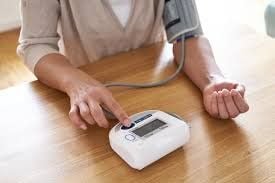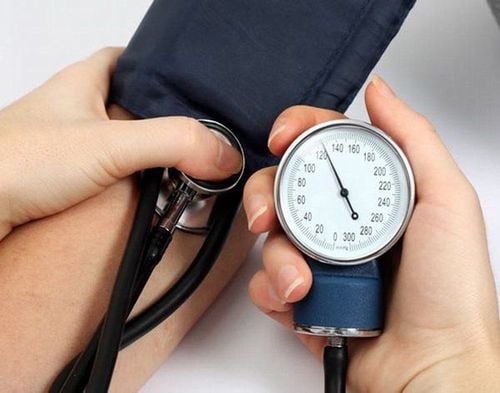This article is professionally advised by Dr. Pham Van Hung, MSc, MD - Department of General Examination & Internal Medicine - Vinmec Da Nang International General Hospital.
Blood pressure is one of the key parameters in assessing human health. Low blood pressure can cause dizziness, lightheadedness, and may lead to many dangerous complications. Therefore, understanding how to manage low blood pressure is essential for everyone to ensure timely intervention and prevent potential dangers.
1. Symptoms of hypotension
Blood pressure is maintained by the body through various mechanisms to ensure that blood is consistently pumped by the heart to supply the organs. If, for any reason, the systolic blood pressure is measured below 90 mmHg and the diastolic blood pressure is below 60 mmHg, it is considered hypotension.
If blood pressure drops suddenly, the patient may experience dizziness, lightheadedness, vertigo, palpitations, rapid heartbeat, and in more severe cases, confusion, disorientation, fainting, and loss of consciousness. Hypotension can prevent the brain and other organs from receiving adequate blood supply, leading to potential cerebral ischemia and brain death.
2. What to do when experiencing hypotension?
First aid for someone with hypotension must be performed quickly and correctly, as failure to do so can lead to complications such as angina, myocardial infarction, kidney failure, stroke, and even life-threatening situations.
When someone experiences low blood pressure, it is important to assess whether they have a history of diabetes. If not, rule out the possibility of hypoglycemia and focus on first aid for hypotension. The first aid process should follow these steps:
Stay calm and gently assist the patient to sit or lie down on a flat surface. Use pillows to elevate the head and legs, with the legs positioned higher than the head.
Give the patient a glass of warm drink such as soup, ginger tea, coffee, or strong tea, or food high in salt to help them feel better. If such drinks or foods are unavailable, encourage the patient to drink plenty of water to stimulate the heart rate and temporarily raise blood pressure.
You may also give the patient a small amount of chocolate to help protect the blood vessel walls and stabilize blood pressure.
If the patient has been prescribed medication for low blood pressure, administer the prescribed medication.
If the patient's condition improves, gradually help them sit up, reminding them to move their arms and legs before standing.
If the patient does not feel better, quickly take them to the nearest healthcare facility for timely examination and treatment.

3. How to prevent hypotension?
For people with low blood pressure, a recommended diet includes consuming more salt than normal, eating a variety of nutritious foods, having regular meals, and ensuring sufficient vitamin intake. It's also important to drink plenty of water to help increase blood volume and avoid alcoholic beverages.
Maintaining a balanced lifestyle is essential, including getting enough sleep, avoiding excessive physical exertion, and not making sudden position changes. When lying down, keep the head low and the legs elevated. If you need to stand or walk for long periods, wearing compression stockings can help prevent blood from pooling in the legs and improve circulation back to the heart.
Additionally, during hot weather, if you need to work or engage in outdoor activities for extended periods, the air temperature and the body’s cooling mechanism through sweating can cause a significant loss of water that may go unnoticed. Therefore, it is important to ensure adequate hydration and electrolyte replenishment. Moreover, it is essential to manage work hours wisely, avoid peak sun hours, and take regular breaks to restore circulation, preventing cells from becoming dehydrated and depleted.
However, if blood pressure does not return to normal levels despite these measures, or if hypotension is accompanied by injury or blood loss, the patient should be taken to the nearest healthcare facility as soon as possible.
Finally, it is important to regularly monitor your own and your family members' blood pressure at home to assess health status and intervene in a timely manner to prevent any potential complications.
In summary, not only high blood pressure but also low blood pressure can be very dangerous and sometimes life-threatening if not treated promptly. Understanding these issues and knowing how to manage hypotension at home is crucial to protecting the health of yourself and your family.
Measuring blood pressure at home may involve some errors if one does not have enough knowledge or experience.
Moreover, blood pressure measurements and evaluations of other cardiovascular indicators require complex equipment and techniques. Therefore, to ensure comprehensive cardiovascular health, Vinmec International General Hospital offers cardiovascular screening packages.
These screening packages are performed by a team of highly specialized and experienced doctors who are dedicated to patient health. Additionally, Vinmec has modern and convenient facilities that ensure the highest screening effectiveness, coupled with professional service quality that has become a trusted brand, providing customers peace of mind when caring for their health here.
-Dr. Pham Van Hung, MSc, MD, has 30 years of experience in diagnosing and treating internal medicine diseases, particularly in the field of cardiology: coronary artery disease, heart failure, heart valves, arrhythmias, etc. Master, Doctor Hung previously served as the Deputy Head of the Cardiology Department and the Head of the Interventional Cardiology Unit at Da Nang General Hospital and is currently working at the General Examination & Internal Medicine Department, Cardiology, and Interventional Cardiology at Vinmec Da Nang International General Hospital.
To arrange an appointment, please call HOTLINE or make your reservation directly HERE. You may also download the MyVinmec app to schedule appointments faster and manage your reservations more conveniently.









